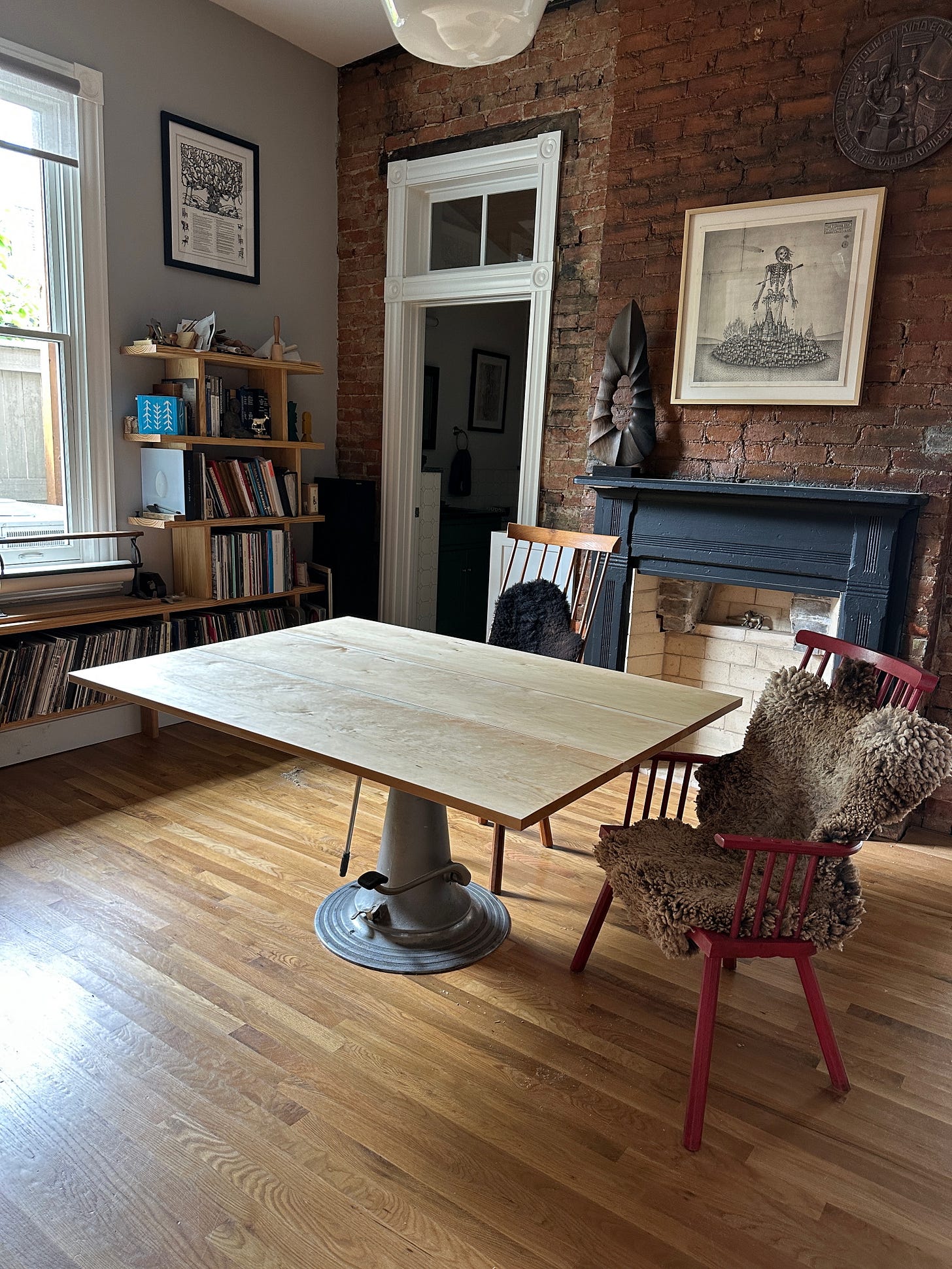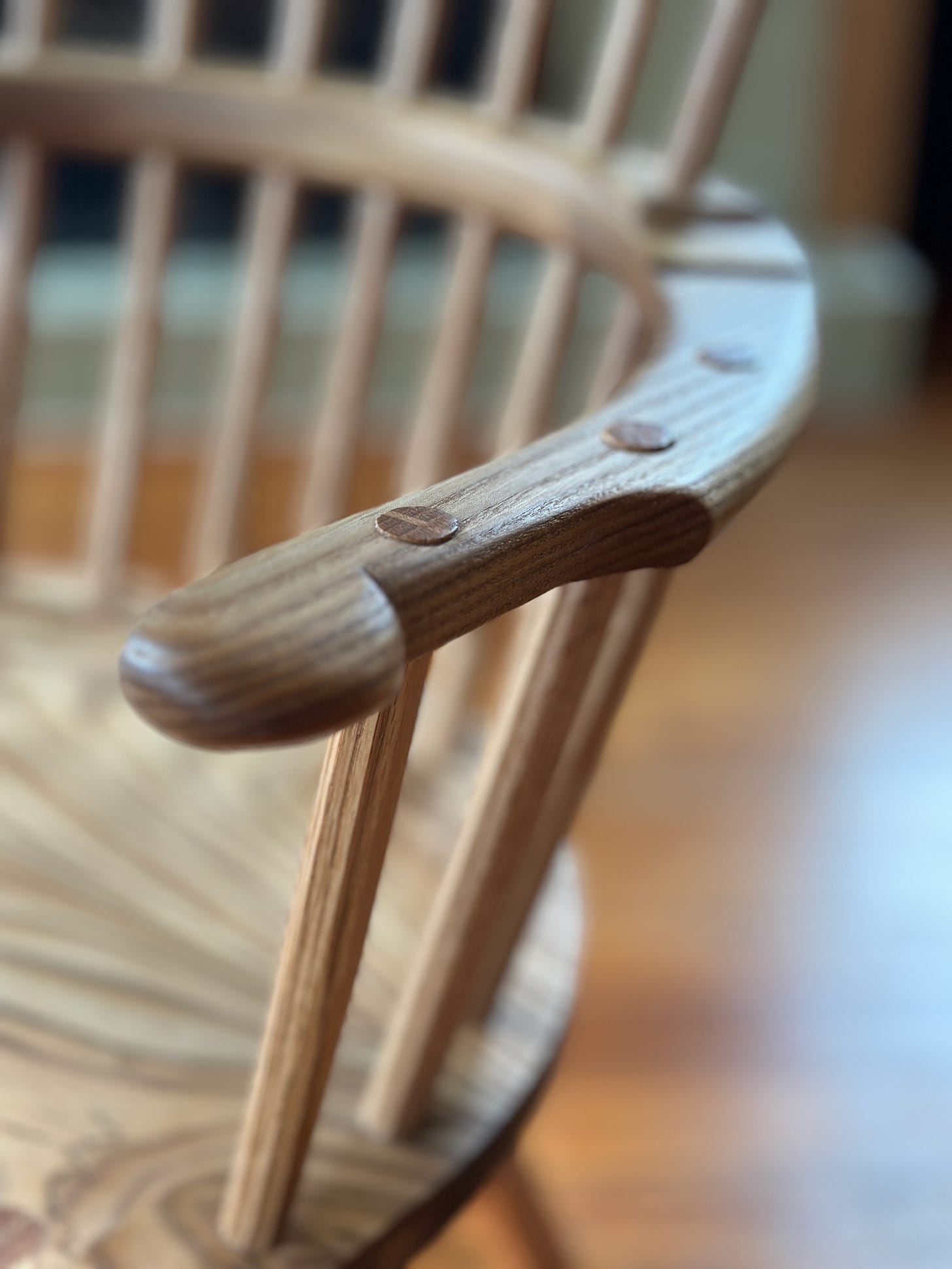I have learned to try not to be too clever – nor too ambitious. “Half of something is better than all of nothing.” How many of us have unfinished projects that seemed like a good idea at the time? Better to have made, finished and used a simple bookcase in relatively cheap pine, than to have a half completed, oak, breakfront set, taking up room in the workshop. Ambition can be a terrible force. Most worthwhile accomplishments are a “brick on brick” operation. Lots of patient practice built into experience and eventually confidence.
— John Brown, Good Woodworking, Issue 81
The last time I saw Sam Maloof, he was in a wheelchair. But that was mostly to conserve his energy so he could build chairs the next morning. He was 93.
If there’s one thing I can say about the craft, it’s that you get better and better at it – even into old age.
Yes, it sucks that your hands become whiny complainers, and that your knife lines are blurry. But if you keep at the craft, day in and day out, I promise you will continue to improve, despite the indignities that time throws at you.
I teach a lot of young woodworkers, and when they get frustrated that they cannot cut a crisp dovetail or make a straight tenon, I say something like this:
“You just have to tell yourself the same thing I tell myself almost every morning: Practice 30 more years.”
If you are at the beginning of the craft, you might think I’m talking crap. Almost everything we value in our society – beauty, athleticism, energy, sex – is tied to youth. Furniture making – and many allied crafts – are not.
When I was 40, I met two brothers in Cincinnati who were bookbinders. We were all about the same age, and I was astounded by how good they were. They did everything old school using line-shaft equipment they had converted to electric motors. Nothing was automated. And the books that came out of their shop were perfect. Flawless, even.
I asked: “How did you get so good at this?”
Their answer: “Well, dad started us on this when we were 10. This is all we’ve ever done.”
If you are at the beginning of the craft, you might despair to hear this. Don’t. It’s the most comforting thing you can carry with you. Your work will improve every day because every joint you cut makes the next one easier. Every box you build makes the next one go together with fewer errors. Every design you draw is informed by everything you have seen since you first opened your eyes.
It’s an incredibly long journey ahead. It’s longer than most people’s entire careers.
Last weekend, three of my friends from school in Arkansas came for an overdue visit. We first became close while making irritating noises in a band called Freudian Slip through high school and college. Today we’re all 56 or 57 and have markedly different lives. One sells insurance (and still plays in a band – I’m envious), one is in consulting and the third is a freelance writer.
The insurance salesman plans to retire soon. He’s been good with money and has saved a lot. He hopes to move to the countryside in France in the next few years.
“What are you going to do there – like day to day?” I asked.
His answer: Enjoy life’s little pleasures. Pastries. Long walks. Conversations with friends.
The consultant says he’s waiting for his company to wash him out. It could be any day. He works hard, but he knows that his high salary is a target on his back. He’s going to hang on as long as he can until the axe falls. And then?
His answer: Grow trees, maybe.
The freelance writer didn’t have an answer about his future.
So, then it’s my turn to talk.
“Honestly, I feel I’m just getting started in the craft.” And that’s the truth. I’ve made my living at woodworking for 29 years. I’ve always spent at least half of every day at the bench. I still read every decent magazine, book and blog on the craft I can find.
But I still have a long way to go to become a good woodworker.
I can’t wait to see what my work will look like when I’m 66, then 76. I know it will be better because every day I learn something old. I caught a glimpse of it when I was in my 30s. I got a toehold in my 40s. Now in my 50s, I don’t worry about joinery, wood selection or finish. I worry about making it beautiful. And making it faster.
We’re supposed to slow down as we age, but I have found the opposite can be true in woodworking.

On Wednesday morning, I set aside two hours to make a new desktop for a 1960s-era drafting table in our office. It’s big (42" x 62") with beaded tongue-and-groove joints between each board.
When I was in my 20s, this job would have taken me a couple days. Because I was ignorant.
Now I know this:
Keep reading with a 7-day free trial
Subscribe to The American Peasant to keep reading this post and get 7 days of free access to the full post archives.




